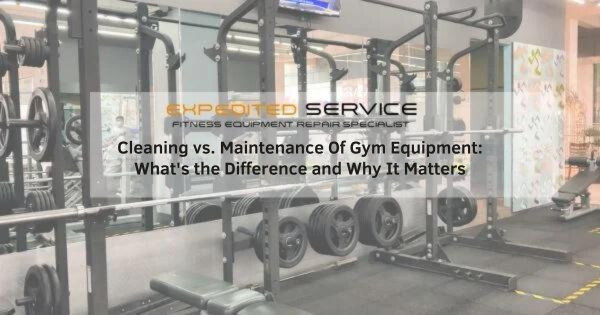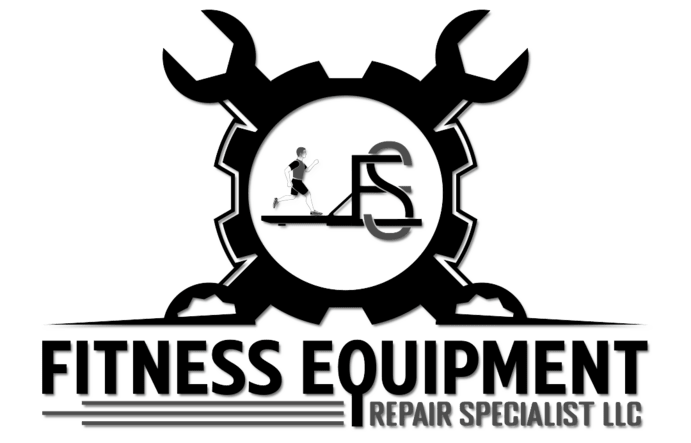
The Importance of Quality Gym Equipment – Making A Wise Investment
June 7, 2024
Cleaning vs. Maintenance Of Gym Equipment: What’s the Difference and Why It Matters
June 9, 2024The human desire for a strong and healthy body has existed since the dawn of time. From the ancient Greeks hoisting stones to today’s gym-goers logging miles on virtual reality treadmills, the tools we use to achieve our fitness goals have undergone a remarkable transformation. This exploration of modern fitness equipment delves not just into the technological advancements, but also the surprising historical roots and cultural shifts that influence our approach to exercise.
A Resurgence of Free Weights and Functional Training
The oldest dumbbells were made by Greek trainers and athletes between 800 and 700 B.C. who were striving for higher physical performance. The first dumbbells were called halteres and were constructed of stone. Different sizes of halteres were designed to give athletes different levels of resistance.
The 21st century has witnessed a fascinating resurgence of free weights and a renewed focus on functional training. Crossfit, with its emphasis on compound movements and high intensity, brought equipment like battle ropes, prowler sleds, and plyometric boxes into the mainstream. Gyms are now more multifaceted spaces, catering to a wider range of fitness goals with a diverse selection of equipment. From traditional free weights and machines to kettlebells, medicine balls, and TRX suspension trainers, there’s something for everyone. This shift reflects a growing understanding of the importance of functional movements that translate into everyday activities and overall well-being.
Beyond Iron The Cardio Innovation and Tech Integration
Cardio equipment has also seen significant advancements in the 21st century. Gone are the days of monotonous treadmill sessions. Today’s treadmills offer incline/decline options, varied running surfaces, and virtual reality integration that allows users to run through scenic trails or bustling cityscapes. Elliptical trainers boast improved biomechanics and interactive workouts, while stationary bikes offer immersive spinning classes and power meter training.
Technology has become a major player in modern fitness equipment. Smart treadmills track your running data (distance, pace, calories burned) and can even adjust the incline or resistance based on pre-programmed workouts. Interactive spin bikes connect to apps that provide guided classes and compete with other riders virtually. Fitness trackers monitor your heart rate, sleep patterns, and activity levels, providing valuable insights into your overall physical health.
Surprising Facts – From Ancient Roots to Modern Tech
The history of fitness equipment is filled with fascinating and unexpected facts:
- Early Strength Training: While the ancient Egyptians didn’t have the sleek dumbbells and medicine balls of today, their ingenuity shone through. They used clubs carved from wood for basic swinging and striking exercises, similar to kettlebells. For weighted training, they filled leather bags with sand or stones, creating a precursor to the medicine ball. These tools, along with wrestling and bodyweight exercises, helped them develop strength and stamina essential for daily life and warfare.
- Medieval Fitness: Knights in the Middle Ages weren’t just about brute strength. They needed agility, balance, and precise hand-eye coordination to excel in jousting tournaments. Enter the quINTAIN. These ingenious training devices were essentially weighted mannequins mounted on pivots. Knights would charge at the quINTAIN, aiming to strike its shield with their lance while avoiding being struck themselves as the quINTAIN swung back. This practice not only honed their jousting skills but also developed reflexes, core strength, and overall combat readiness. In a way, the quINTAIN foreshadows the concept of functional training, which emphasizes exercises that mimic real-life movements and translate into improved performance in specific activities.
- Leonardo da Vinci’s Gym Design: The polymath Leonardo da Vinci wasn’t just a master of art and engineering; he also had a keen eye for human anatomy and movement. In the 15th century, he sketched plans for a “universal gym”. This visionary design featured a rotating wheel and crank system with various attachments that could simulate exercises like rowing, pulling, and lifting weights. While Da Vinci’s concept wasn’t built during his lifetime, it foreshadowed the multi-functionality and adjustability of modern weight machines that allow users to target different muscle groups with a single apparatus
- The Rise of Women’s Fitness: The 19th century saw a shift in how women approached exercise. Previously, physical activity for women was often seen as unfeminine. However, a growing awareness of the importance of health and well-being led to the rise of “gyms for ladies”. These specialized facilities offered a more socially acceptable way for women to get exercise. The equipment in these gyms was designed to be more gentle and focused on improving posture, grace, and weight management. Lightweight dumbbells made of wood or metal offered targeted muscle toning, while rowing machines provided a low-impact cardiovascular workout. Stationary bikes, a novel invention at the time, offered a way for women to stay active indoors without causing a stir. These early gyms for ladies paved the way for the inclusivity seen in modern fitness centers, where everyone, regardless of gender, can pursue their health and fitness goals.
The future of fitness equipment promises even more exciting advancements. Artificial intelligence (AI) integration is on the horizon, with machines that can personalize workouts based on your fitness level, goals, and real-time performance data. Interactive mirrors that provide feedback on form and technique can help users maximize their workouts and minimize injury risk.
Biofeedback technology may also play a role, allowing users to monitor muscle activation and adjust exercises accordingly. Wearable technology is constantly evolving, with devices that track not just steps and heart rate but also sleep quality, stress levels, and even muscle fatigue. This data, integrated with AI-powered fitness equipment, can create truly personalized and data-driven exercise experiences.
Modern fitness equipment offers an impressive array of tools to help us achieve our fitness goals. However, it’s important to remember that equipment is just one piece of the puzzle. A holistic approach to fitness is essential for long-term success. Here are some key factors to consider:
- Nutrition: A healthy diet is crucial for fueling your workouts and aiding in recovery.
- Rest and Recovery: Give your body adequate rest between workouts to allow for muscle growth and repair.
- Sleep: Quality sleep is essential for overall health and recovery.
- Mental Wellness: Prioritizing mental well-being can positively impact your fitness motivation and energy levels.
- Professional Guidance: Consider consulting with a personal trainer or registered dietitian for personalized guidance.
Conclusion – 21st Century Gym Promote Fitness for Everyone
The 21st century has ushered in a new era of fitness equipment, where technology meets innovation to cater to a wider range of fitness goals and preferences. From the resurgence of free weights to the integration of AI and virtual reality, the future of fitness promises a personalized and data-driven approach to exercise. However, it’s important to remember that the most cutting-edge equipment doesn’t guarantee success. Consistency, a well-rounded approach, and a focus on overall well-being are key factors in achieving your fitness goals and living a healthy life. For any equipment maintenance needs, NJ Fitness Equipment Repair is there to ensure your devices remain in top condition.
The beauty of modern fitness is its inclusivity. Whether you’re a seasoned athlete seeking peak performance, a beginner starting your fitness journey, or someone with limitations seeking to improve your health, there’s equipment and a workout plan tailored to your needs. So, embrace the fascinating history of fitness equipment, explore the innovative tools available today, and most importantly, find an approach that sparks your passion and helps you achieve a healthier, happier you.
Frequently Asked Questions – FAQs
What was the very first exercise apparatus?
Around 6000 BC, historical documents from ancient China mentioned the usage of exercise equipment, such as stone lifting, archery, and weight throwing, for both personal health and military training.
What’s the biggest change in fitness equipment in the 21st century?
The rise of technology! From virtual reality treadmills to AI-powered workouts, equipment is becoming personalized & data-driven.
Free weights or machines? What’s best?
It depends! Free weights offer versatility, while machines provide controlled movements. Combine both for a well-rounded workout.
Is there any history behind modern equipment?
Absolutely! Ancient Egyptians used weighted bags, foreshadowing medicine balls. Leonardo da Vinci even sketched a “universal gym” in the 15th century!
What’s the future of fitness equipment?
Expect AI that personalizes workouts, interactive mirrors for form feedback, and biofeedback tech for muscle activation monitoring.
Isn’t fitness just about the equipment?
Nope! Nutrition, rest, sleep, and mental well-being are all crucial for holistic fitness. Don’t neglect these factors!
Is there equipment for everyone, regardless of fitness level?
Absolutely! From free weights to virtual reality workouts, there’s something for everyone. Find what motivates YOU!

